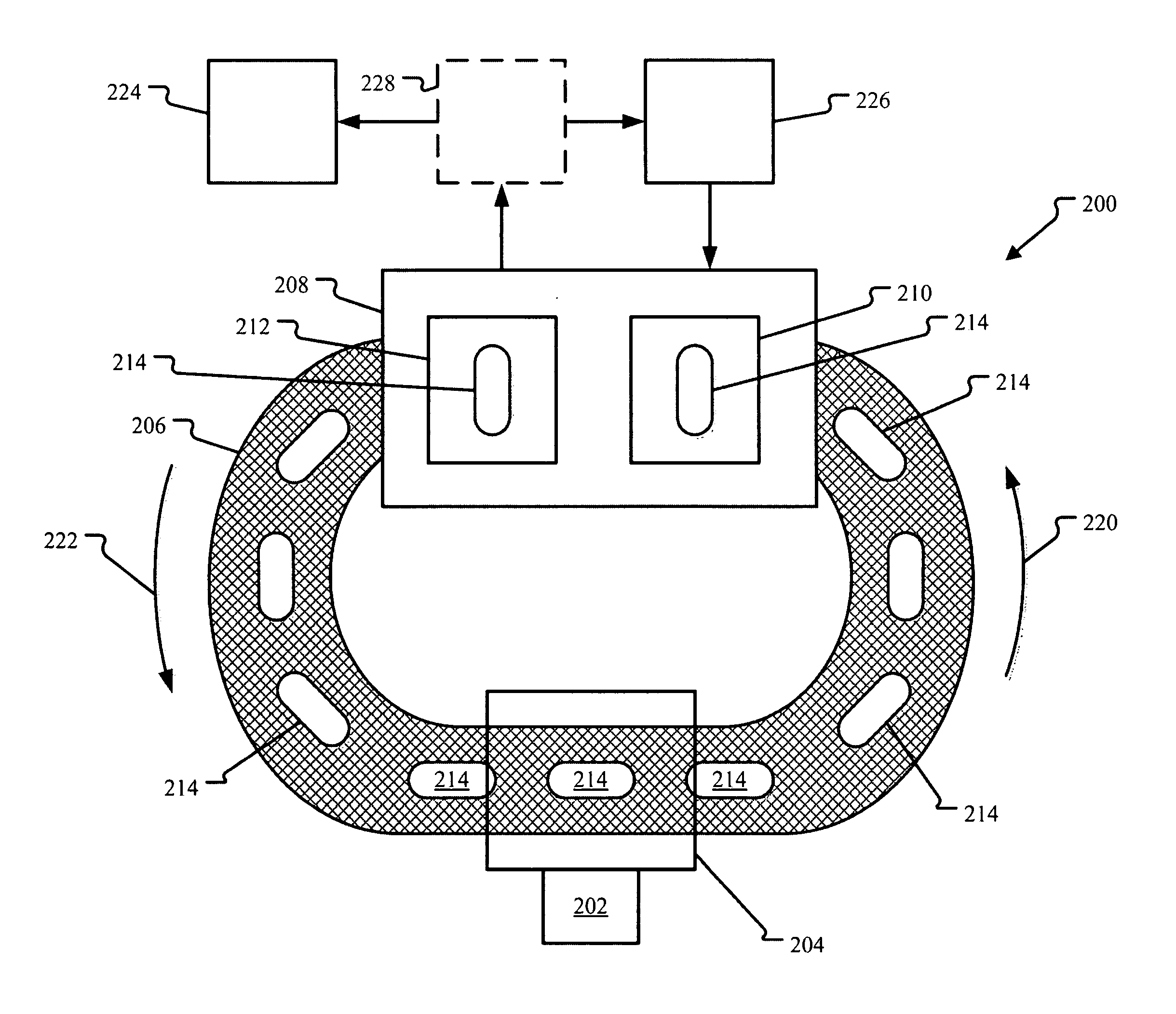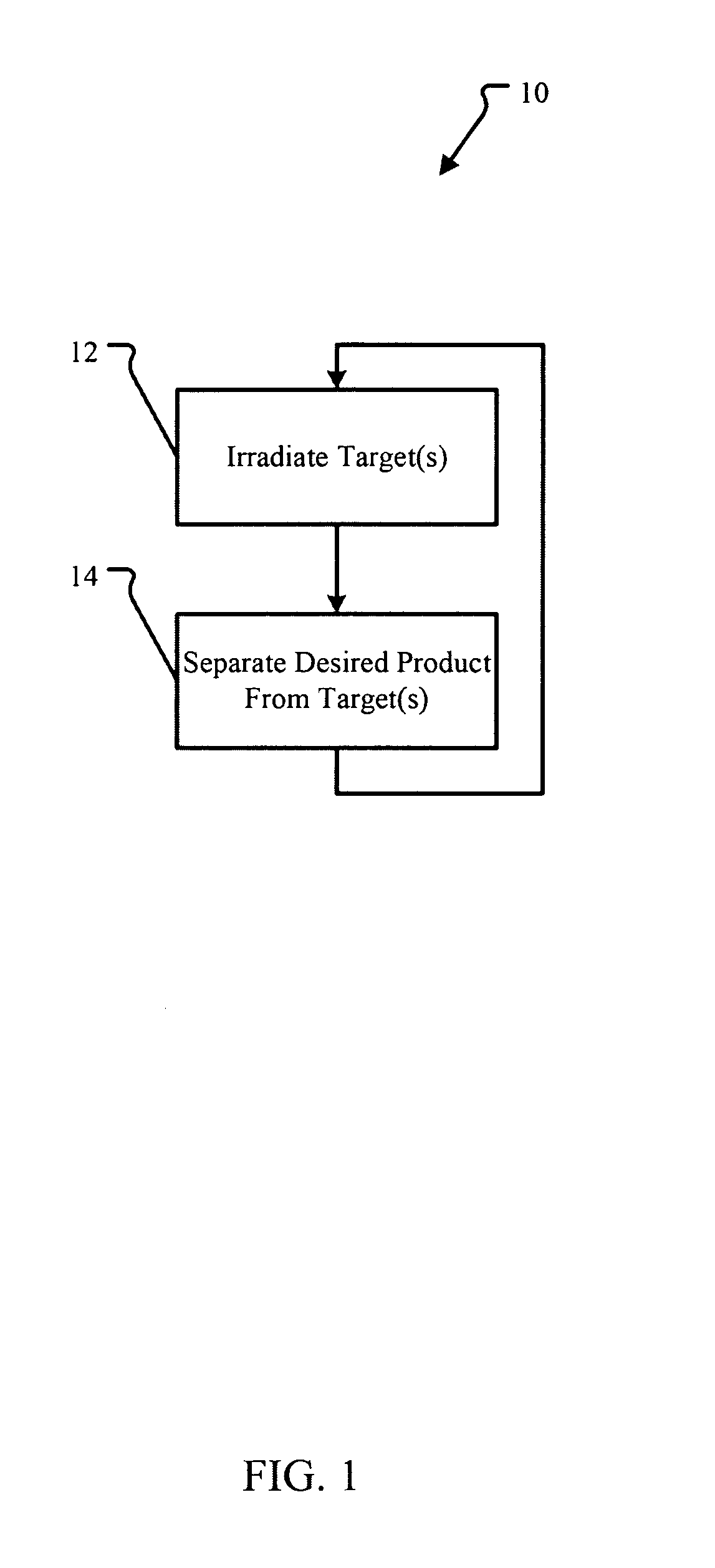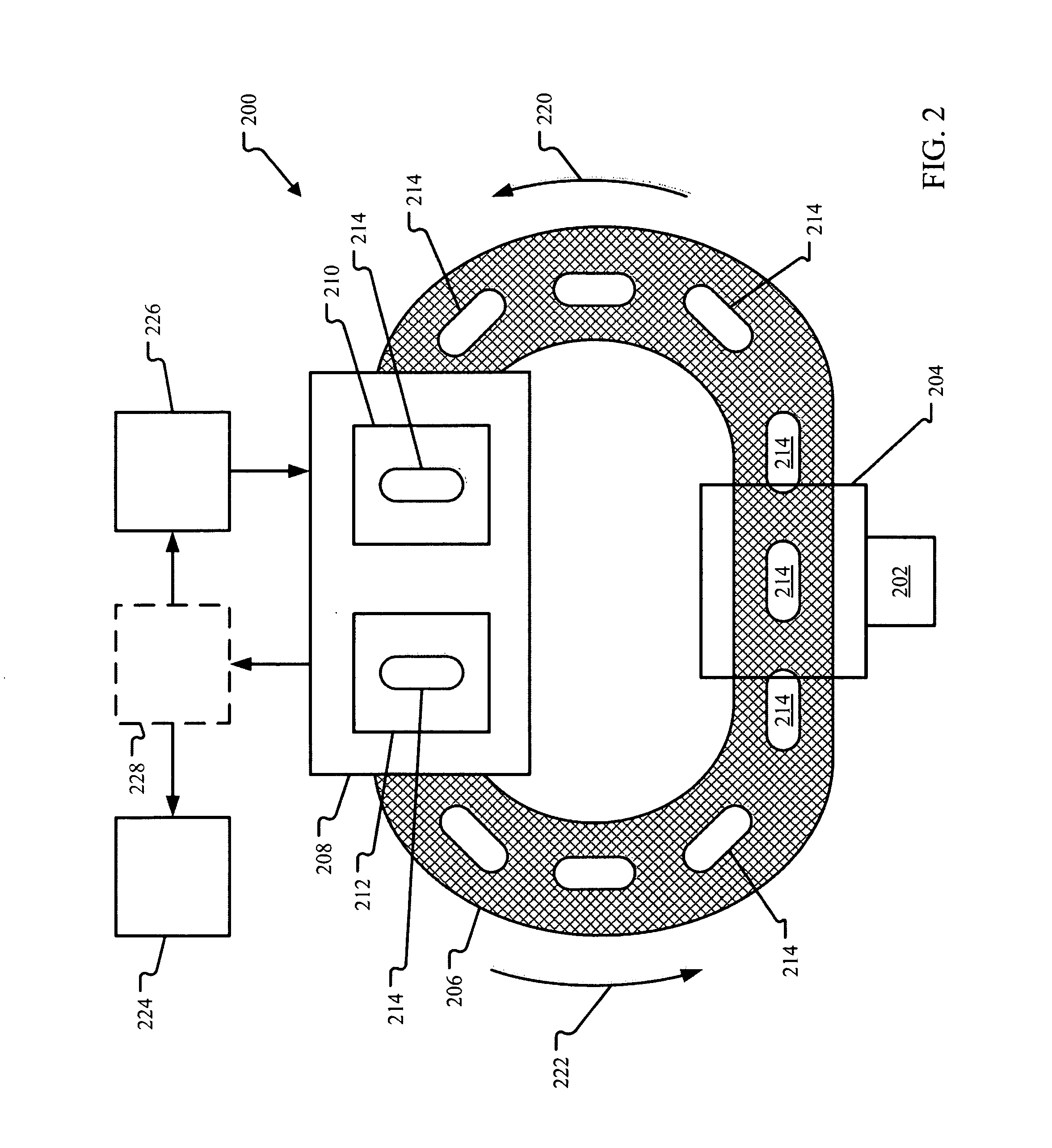Targetry coupled separations
a technology of coupled separation and targetry, applied in the direction of separation process, nuclear elements, greenhouse gas reduction, etc., can solve the problems of additional processing steps, loss of potential product and additional waste generation, and loss of potentially usable (and valuable) materials, and increase the disposal cos
- Summary
- Abstract
- Description
- Claims
- Application Information
AI Technical Summary
Benefits of technology
Problems solved by technology
Method used
Image
Examples
Embodiment Construction
[0047]FIG. 1 illustrates, at a high level, an embodiment of a targetry coupled separation method that repeatedly generates irradiation products, such as radioisotopes, from some amount of target material. In the method 10 as illustrated, some amount of target material is irradiated in an irradiation operation 12 which creates a desired irradiation product. The irradiation operation 12 is followed by a separation operation 14 in which the desired product is removed from the target material without substantially reducing the amount of post-irradiation target material. (As discussed in greater detail below, the word ‘substantially’ shall be used at times when referring to the amount of target material that remains in the irradiated object after a separation operation 14 to remind the reader that no separation technique is perfect and a small or de minimis amount of the target material may, in fact, be removed during the separation operation 14.) The desired product, after removal from ...
PUM
| Property | Measurement | Unit |
|---|---|---|
| grain size | aaaaa | aaaaa |
| grain size | aaaaa | aaaaa |
| grain size | aaaaa | aaaaa |
Abstract
Description
Claims
Application Information
 Login to View More
Login to View More - R&D
- Intellectual Property
- Life Sciences
- Materials
- Tech Scout
- Unparalleled Data Quality
- Higher Quality Content
- 60% Fewer Hallucinations
Browse by: Latest US Patents, China's latest patents, Technical Efficacy Thesaurus, Application Domain, Technology Topic, Popular Technical Reports.
© 2025 PatSnap. All rights reserved.Legal|Privacy policy|Modern Slavery Act Transparency Statement|Sitemap|About US| Contact US: help@patsnap.com



